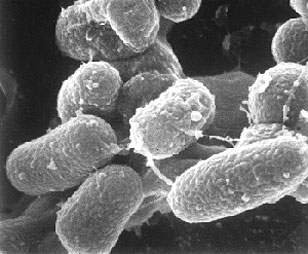This blog has been a fun
project for my Infectious Disease class, and I have learned a lot on current
issues related to the subject. I plan to continue writing about any coursework
or news that may be interesting to my friends and family. I hope everyone
has enjoyed the blog so far!! Until next time!!
Infectious Insight
Monday, August 4, 2014
Thursday, July 31, 2014
Bacteria linked to Crohn's disease found in shower, river water aerosols
Since I have Crohn’s disease, this article really stuck out
at me. After reading it, I don’t think the findings are very definitive, but
this may lead to more research on the mechanism of how the normal flora gets
shifted in the intestines of Crohn’s disease patients.


Since I have Crohn’s disease, this article really stuck out
at me. After reading it, I don’t think the findings are very definitive, but
this may lead to more research on the mechanism of how the normal flora gets
shifted in the intestines of Crohn’s disease patients.
This study tested aerosols and biofilm samples from the
River Taff area in Cardiff, Wales. 5 aerosol samples and 30 domestic shower
samples from 23 homes across 4 UK counties were collected with a high volume
impaction sampler, along with biofilm samples from shower tubes and heads. Epifluorescence
microscopy, bacterial cultures, and polymerase chain reaction assays were
performed on each of these samples. Mycobacterium avium subspecies paratuberculosis
was detected in 1 of the 5 river samples and 3 of the 30 shower samples across
all regions.
This study concluded that the exposure to this organism
could be due to aerosols from the rivers and domestic showers. This led them to
the associated of aerosols in the river taff influencing human Crohn’s Disease.
I have never been to Wales or the UK so I cannot speak on my
exposure to this organism, but I am glad to see research in finding possible
causative agents.
Article Reference: Bacteria linked to Crohn's disease found in shower, river water aerosols
Wednesday, July 23, 2014
Advances in C. difficile Infection Research
Clostridium difficile has
been on the rise for the past 10 years, and has been known to reoccur in 20% of
treated patients. Recently there has been 6 discoveries in research for this
infection.
1. Immunocomprimised patients
successfully rid the infection with a fecal microbiota transplant. One of our
classmates did a graduate project on these types of transplants, and the many
benefits that arise from them.
2. Severity and outcomes of
these infections have improved in US urban population. This may be due in part
to clinicians following a more appropriate workup for therapy.
3. Functional changes and
microbial structure changes occurred after a fecal microbiota transplant. This
should be expected since you are changing microbial populations in the gut
environment.

4. Utilizing probiotic drinks
and withdrawing antibiotics may also resolve C. difficile infections. In some
instances it has been equally effective as a fecal transplant. Antibiotic
regimens should be slowly withdrawn while implement daily consumption of a
probiotic beverage. This can be an easy fix in non immunocompromised patients.
5. Tolevamer has been found to
be inferior to current C. difficile treatments. Tolevamer is a non-antibiotic,
toxin - binding agent that has been tested to treat C. difficile infections. It
may be used as an adjunctive treatment in the future, but for the time being it
does not successfully treat the infection.
6. Although severity and
outcomes have improved in the US, C. difficile infections have increased in
Europe since 2008. Numbers have risen from 4.12 to 7.92 cases per 10,000
patient bed days. Researching these infections and possible treatments can
hopefully change this trend.
Subscribe to:
Posts (Atom)